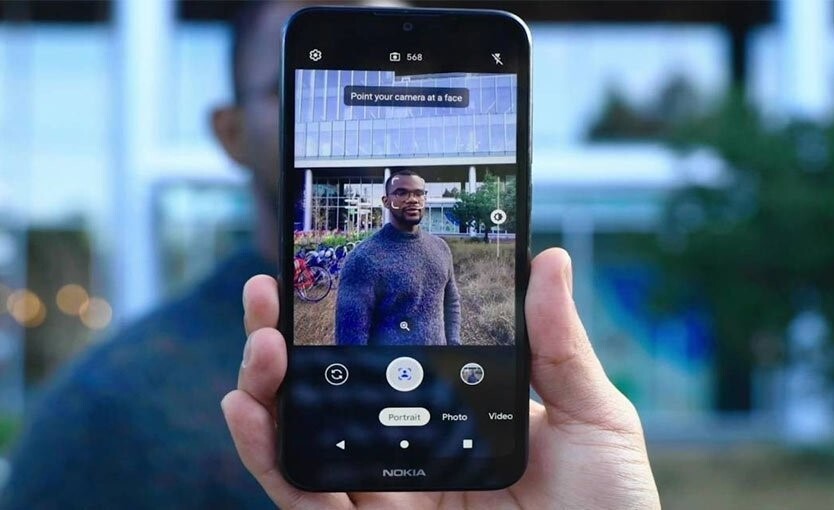What is Facial Recognition Technology?
Facial recognition technology is a part of biometric technology that identifies a person by face. It is also described as Biometric Artificial Intelligence, which is used to capture a person’s facial texture and facial recognition such as eye retina, nose, and face shape. It is used for facial recognition in videos, photos, or real-time. Facial Recognition has been a great help for the security department to identify criminals based on the video footage.
Read developments about 5G wireless Technology and what measures to take to prevent cybercrime.
Which Face Unlocking Technology is used in Smartphones?
- Android Basic Facial Technology: Android operating system introduced face unlocking from its “Ice Cream Sandwich” version (Android 4.0) in 2011. The main drawback of this face unlocking technique was that it used to store only 2D images so it was very easy for someone or a thief to fool the system and unlock the phone easily. As this technique was not fully efficient so users used this option along with a PIN or password. Surprisingly Google has discontinued the face unlock feature with the Android 10 release due to security reasons.

- Samsung Iris Technology: Iris scanner in the Samsung device works based on the retina of eyes, just as human fingerprints are unique, the retina of the eye is also unique and no one can copy it. Samsung launched the Iris technology in its flagship devices Galaxy Tab Iris, Galaxy S7, and S7 Edge. Because earlier a normal front-facing camera could not scan the retina of the eye, Samsung gave a special infrared narrow-focus camera to its flagship smartphone so that it could easily scan the retina of the eye. One disadvantage of the Iris technology is that it generally requires close proximity to the camera, which can cause discomfort to the eyes for some.

- Apple Face ID: Face ID is a type of facial recognition technology that the Apple company has designed and developed and started using in iPhone X, XS MAX, and iPad Pro (3rd & 4th Gen.) After introducing 3D facial recognition technology in 2017, Apple has continued using it in every new iPhones and iPads. With the face ID introduction, Apple decided to discontinue the other biometric authentication, touch ID from 2017 in iPhones and iPads.
Here’s how to set up Face ID:
- Tap Settings
- Tap Face ID & Passcode
- Enter the Passcode (if prompted)
- Tap Enroll Face (Under Face ID)
- Tap ‘Get Started’ & follow the on-screen prompts
- You will be asked to position your face within the frame
- Move your head around so that it is scanned from all the angles
When setting up Face ID, you’ll need to move your head around slowly so that Face ID can fully recognize your face. The setup process will take two scans of your face and then that’s it.

Which Face Unlocking Technology is Better?
The Face unlocking biometric was introduced in 2016 with the Samsung Galaxy Note 7 whereas Apple first introduced Face ID in its iPhone X in 2017.
Apple Face ID technology is more promising with its accuracy and security and also it is based on a 3D facial recognition sensor. It is also capable of scanning the face even in the dark. This sensor consists of 3 parts, the first is the Dot Projector module, in which an infrared dot pattern is made on the face of the user, and the second module is the flood illuminator that is responsible to read the infrared patterns and generating a 3D facial map. The third module is an infrared camera that takes an infrared picture of these patterns. These patterns are encrypted and sent to a local Secure Enclave in the CPU of the device to match the registered face. If a user performs an unsuccessful scan 5 times, the Face ID becomes disabled for 48 hours. Also, Apple has claimed that 1 person out of 10,00,000 is likely to unlock the phone by another person with Face ID while 1 in 50,000 is likely to be in Touch ID. In addition, the Face ID system can easily recognize the face even when wearing makeup, hats, scarves, and glasses, and also it can adapt to the age factor of a person.
Conclusion:
Facial recognition technology has been in use for the past few years. With the improvements in security and speed, technology is evolving slowly to newer heights. The future could move towards free walks through doors so that the technology would detect faces and allow entries automatically.
Some people believe that even today’s password and PIN are better and safer than face technology because it is a bit difficult to crack the password. Each authentication method has its own advantages and disadvantages. One place, where facial recognition can stand out from other biometrics is online authentication during conferences or video-enabled meetings where mainly face is scanned and authentication is done on a larger scale. Facial recognition still has a long path to ride on. We will keep you posted.